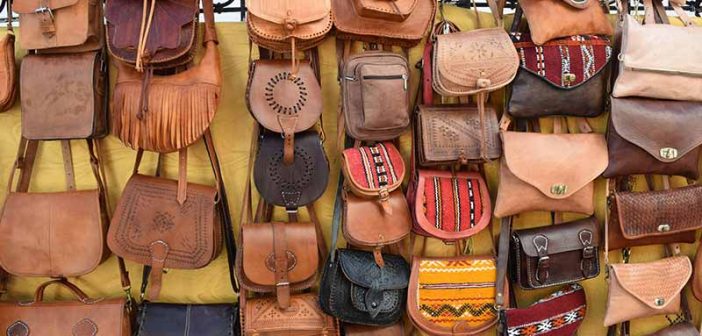Tucked along the Ganges River near Kanpur in Uttar Pradesh, Jhajmau is a place that holds centuries of history, culture, and craft. Known predominantly as India’s leather hub, this lesser-explored town is home to not only a thriving leather industry but also ancient archaeological sites, a vibrant local culture, and a tantalizing culinary experience. My holiday in Jhajmau revealed a fascinating blend of tradition and modernity, offering insights into its heritage, food, and the unique charm that this town offers to travelers.
Getting There from Mumbai
Traveling from Mumbai to Jhajmau is a relatively straightforward journey, with multiple options depending on your time and budget. I opted for a direct flight to Kanpur from Mumbai, which took around 2 hours. From Kanpur’s Chakeri Airport, it’s a short 20-minute drive to Jhajmau. Alternatively, there are train options like the Mumbai-Kanpur route, with several express trains taking approximately 16-18 hours to reach Kanpur Central Railway Station. From there, a quick taxi or rickshaw ride will take you to Jhajmau.
For those who enjoy long drives, a road trip from Mumbai to Jhajmau via the NH27 takes around 24 hours, offering scenic views of India’s heartland.
Stay: Finding Comfort in the Industrial Heartland
Jhajmau, being an industrial town, doesn’t have the abundance of luxury hotels you might find in big cities, but there are comfortable accommodations that cater to both business travelers and tourists. I stayed at Hotel Royal Cliff, a mid-range option located in Kanpur, just a short drive away from Jhajmau. The hotel offers clean, comfortable rooms with all modern amenities and a courteous staff.
For travelers looking for more budget-friendly accommodations, guest houses and smaller hotels are scattered around Jhajmau, offering basic services at affordable prices. The proximity to Kanpur also allows travelers to stay in some of the more upscale hotels there while commuting to Jhajmau during the day.
Culture: A Town Steeped in Craftsmanship
The culture of Jhajmau is deeply rooted in the leather industry, which has been the town’s backbone for generations. As the “Leather City of India,” Jhajmau is filled with workshops and tanneries, producing everything from leather shoes to high-end fashion accessories for both domestic and international markets. Craftsmanship here is passed down from generation to generation, and it’s fascinating to see the skill and precision with which the artisans work.
Apart from leather, Jhajmau is rich in history. Archaeological excavations in the area have revealed remnants of a 4,000-year-old civilization, making it a significant historical site. You can explore the ancient ruins of Jhajmau Fort, which dates back to the Gupta period, and take in the rich history of the area. The town is believed to have been a center for trade and culture during the Harappan period, and walking through its streets feels like stepping back in time.
The local population is a mix of Hindus and Muslims, and their harmonious coexistence is evident in the town’s daily life. You can see this blend of cultures in the festivals, traditional attire, and religious customs, with both communities celebrating their rituals with fervor. During my visit, I was fortunate to witness the Eid celebrations, where the streets came alive with music, food, and camaraderie.
Attractions: Unveiling Jhajmau’s Hidden Gems
While Jhajmau might not be a conventional tourist destination, there are several attractions that will appeal to history buffs, culture enthusiasts, and those seeking an offbeat experience.
- Jhajmau Fort: One of the town’s oldest and most significant archaeological sites, Jhajmau Fort offers a glimpse into its ancient past. The fort, perched on a mound, has been the site of numerous excavations, with artifacts dating back to the Gupta and Harappan periods. Exploring the fort provides a tangible connection to India’s historical roots.
- Leather Tanneries: No trip to Jhajmau would be complete without visiting one of the local leather tanneries. Most tanneries offer guided tours, where you can witness the entire leather production process, from rawhide to finished products. I visited the Super Tannery, one of the oldest and largest in the region, where I was amazed by the craftsmanship and dedication of the workers.
- Ganga Barrage: A short drive from Jhajmau, the Ganga Barrage in Kanpur is a serene spot along the Ganges River, offering panoramic views and a perfect place for an evening stroll. The barrage is particularly beautiful at sunset, where the river seems to glow under the fading sun.
- Kanpur Memorial Church: For those who want to explore a bit further, the Kanpur Memorial Church (also known as the All Souls’ Cathedral) is a historical British-era church located just a 20-minute drive away. The architecture is striking, and the surrounding gardens offer a peaceful respite.
Food: A Culinary Delight
Jhajmau is not just about leather; it’s also a town that surprises with its culinary diversity. Influenced by both North Indian and Mughlai cuisine, the food here is rich, flavorful, and satisfying.
- Tunday Kababi: I indulged in a plate of the famous Tunday Kababs, a delicacy with its origins in Lucknow but equally loved in Jhajmau. The kababs, made from finely minced meat and a secret blend of spices, literally melt in your mouth.
- Kachoris and Samosas: Street food is a big part of the local experience, and I couldn’t resist trying the freshly fried kachoris and samosas. Paired with tangy tamarind chutney, these snacks are a perfect midday treat.
- Kulfi Falooda: For dessert, I enjoyed a bowl of kulfi falooda, a creamy, cold dessert with vermicelli and rose syrup, perfect for the warm afternoons in Jhajmau.
- Paan: After a hearty meal, don’t miss out on trying paan (a betel leaf preparation), a traditional Indian digestive. It’s especially popular after meals and can be found at almost every street corner in Jhajmau.
Best Time to Visit
The best time to visit Jhajmau is during the winter months (October to March), when the weather is pleasant and ideal for exploring the town and its surroundings. Summers can be quite hot, with temperatures often exceeding 40°C, making outdoor activities uncomfortable.
Final Thoughts: A Unique Experience in Jhajmau
My trip to Jhajmau was a blend of history, culture, and industry, offering a unique experience far from the usual tourist trails. Whether you’re interested in the leather industry, historical landmarks, or simply want to experience the charm of a small Indian town, Jhajmau has something to offer. While it may not have the glitz and glamour of India’s more famous destinations, it’s the authenticity and character of this town that truly make it special.






